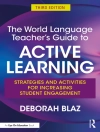This book describes and documents one school’s experiences in achieving their environmental literacy goals through the development of a place-based learning environment. Through this iniative, a longitudinal, descriptive case study began at the Bowen Island Community School to both support and advocate for ecological literacy, while helping the school realize its broad environmental learning goals. Conceptualised as an intensive case study of a learning environment (with an environmental education focus), the program was part of a larger ecological literacy project conducted in association with preservice and graduate education programs at a nearby university and research centre. Following both (empirical) learning environments and participatory (ethnographic) research methods, the project is described from a variety of perspectives: students, teachers, teacher educators, researchers and administrators. The volume describes a variety of forms of place-based education that teachers devised and implemented at the school while giving evidence of the development of a supportive and positive place-based learning environment. The programs and initiatives described in this volume provide the reader with insights for the development of place-based programming more generally . The final chapter outlines participatory methods and action research efforts used to evaluate the success of the project and recounts the development and validation of a learning environment instrument to assist with this process. The new instrument coupled with qualitative descriptions of the learning environment experienced by many at the school give unique insights into the various ways the study of learning environments (as a methodology) may be explored.
Table des matières
Preface; 1. Environmental Learning; 2. Place-based Education in Practice; 3. Development of the Learning Environment; 4. How Many Colours of Green? An Unfolding of Place-based Curriculum in an Island Community; 5. Local Wonders; 6. The Moral Purpose of Schooling: An Administrator’s Perspective; 7. Built Environments: Green Spaces as a Silent Teacher; 8. Developing Smiles: Evaluating Place-based Learning; Epilogue.









![Couverture du Sarah B. B. (University of Central Florida, Orlando, FL, USA) Bush & Kristin L. L. (Bellarmine University, USA) Cook: Simplifying STEM [6-12] Couverture du Sarah B. B. (University of Central Florida, Orlando, FL, USA) Bush & Kristin L. L. (Bellarmine University, USA) Cook: Simplifying STEM [6-12]](https://static.worldofdigitals.com/thumb_webp/414/9781071932414.webp)


